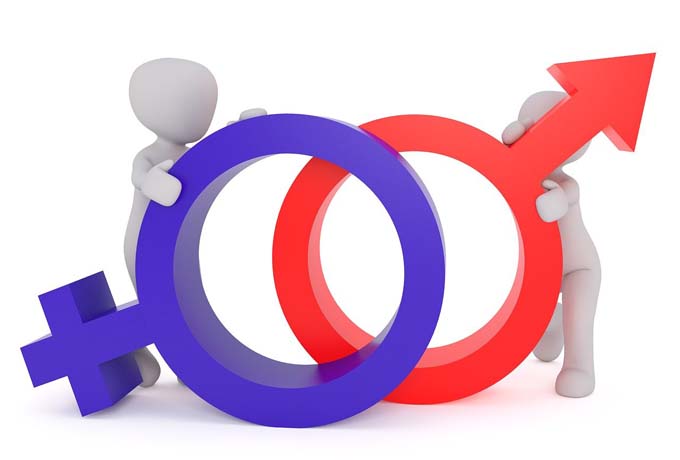Survey shows: equal pay is a reality in many places
A survey commissioned by the Swiss Employers' Association and conducted by the University of St. Gallen shows that 99.3 percent of the companies evaluated comply with the Gender Equality Act. Nevertheless, further efforts are indicated to further reduce the wage differences between the sexes.

One day before the so-called "Feminist Strike 2023", which is to draw attention to a still existing gender inequality with nationwide actions on June 14, the current equal pay survey shows that, at least with regard to salaries, one can no longer speak of discrimination against women across the board. Indeed, the Competence Centre for Diversity and Inclusion (CCDI) at the University of St. Gallen conducted a survey of companies with 100 or more employees on behalf of the Swiss Employers' Association (SAV). This made it possible to compile the results of company pay equity analyses from a total of 615 companies with around 550,000 employees. The survey covers about 10 percent of the companies that had to conduct a pay equity analysis. The CCDI's evaluation focused on those companies using Logib, the federal government's pay equity tool. This method was used by 461 of the companies surveyed. However, even among those companies that do not use Logib for wage equality analysis, the CCDI found that the federal requirements were largely met. According to the evaluation, 89 percent of the companies that did not use Logib showed no gender effect.
Unexplained wage gap of 3.3 percent
Taking into account occupation-specific and personal characteristics, the data collection shows an average unexplained wage difference of 3.3 percent. Of those 461 companies that used Logib, 458 complied with the requirements of the Gender Equality Act - this corresponds to a value of 99.3 percent. Only 3 companies exceeded the tolerance threshold of 5 percent set by the federal government.
The survey thus shows that the federal requirements are complied with in the vast majority of cases, both across the sectors and across the regions. Although there are differences, they are within a very narrow band and within the tolerance threshold. However, it is important to put this into perspective: The survey covers only a fraction of all companies and does not include employees in public administration, i.e. at the federal, cantonal and municipal levels.
Employers comply with their obligations
Even though the survey only takes into account companies from the private sector, the employers see themselves confirmed by these positive results in several respects. According to the Swiss Employers' Association, the survey proves that the figures on the unexplained wage gap used by the trade unions in the political debate are exaggerated. At the same time, it shows that the company reality in terms of equal pay looks much more positive than the figures of the Swiss Wage Structure Survey LSE of the Federal Statistical Office would suggest. The SAV expects that these positive figures from the operational reality will also flow into the political debate. "Companies have made great efforts in recent years to prevent wage discrimination based on gender," explains SAV President Valentin Vogt.
Continue to work on equal pay
At the same time, employers also concede that further efforts are needed to further reduce the wage gap between the sexes. According to the SAV in its statement on the results of the evaluation, the causes must be addressed. These essentially include the fact that women have significantly more frequent interruptions in their working lives than men. In view of this, it is important to create framework conditions that enable women to participate in working life in the same way as men - the reconciliation of private and professional life is important here. "If, in addition, women increasingly enter professions previously dominated by men in order to pursue a professional career, the wage gap will continue to narrow in the coming years," explains Daniella Lützelschwab, Head of the Labor Market Department at the SAV.
Source and further information: Swiss Employers' Association
Explainable and unexplainable wage difference
If there are wage differences between the sexes, this does not mean that there is discrimination. Thus, occupation-specific and personal characteristics lead to a difference in wages. This so-called explainable wage difference takes into account characteristics such as hierarchical level, education or potential professional experience. If a wage difference remains after deduction of these admitted, explainable criteria, one speaks of the unexplainable wage difference. An unexplained wage difference does not automatically indicate wage discrimination because there are other wage-relevant criteria that are not taken into account.Swiss Wage Structure Survey (LSE) and Company Wage Analyses
The LSE of the Swiss Federal Statistical Office is maintained as a national analysis of wage differences between women and men. Here, employees with similar characteristics are compared across all companies. In contrast, in the company wage equality analysis, employees are only compared with employees in the same company and with similar characteristics. As a result, the within-firm analysis is not affected by any differences in wage levels across firms. The differences in methodology lead to different results that are not directly comparable. The company-internal wage equality analyses thus provide a significantly better reflection of operational reality.









